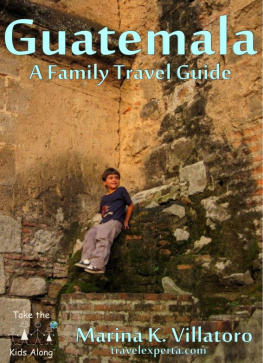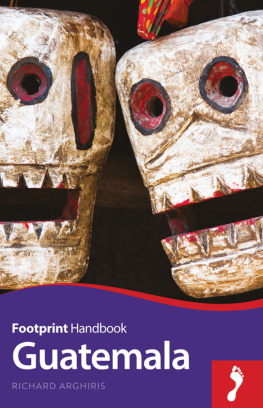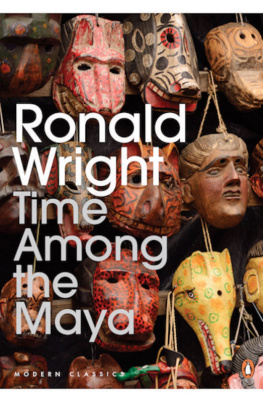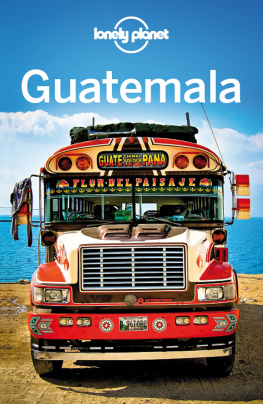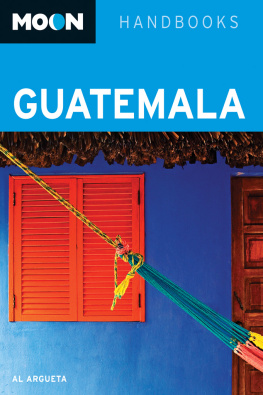ISBN for this digital edition: 978-0-8263-3881-5
2006 by the University of New Mexico Press
All rights reserved. Published 2006
Printed in the United States of America
10 09 08 07 06 1 2 3 4 5
The Library of Congress has cataloged the printed edition as follows:
Metz, Brent E.
Chorti-Maya survival in eastern Guatemala : indigeneity in transition / Brent E. Metz.
p. cm.
Revision of thesis (Ph. D.)State University of New York at Albany, 1995.
Includes bibliographical references and index.
ISBN-13: 978-0-8263-3880-8 (pbk. : alk. paper)
ISBN-10: 0-8263-3880-1 (pbk. : alk. paper)
1. Chorti IndiansHistory.
2. Chorti IndiansSocial conditions.
3. Chorti IndiansPolitics and government.
4. GuatemalaSocial life and customs. I. Title.
F1465.2.C5M48 2006
972.8100497428dc22
2005027958
Acknowledgments
W ith the completion of a book as drawn out and overdue as this one, I am not sure whether to thank or apologize to all the people I leaned on along the way. I would not be publishing this book, much less continue to survive in academics, if it were not for the combined support of the following generous people. To Gwynne Jenkins, who suffered through this in its dissertation stage and then two major revisions, I am sorry and thank you for all your saintly patience and your thoughtful commentary over the years. Oscar Horst introduced me to Guatemala in 1984, and his enthusiasm for Guatemala has lit a fire of curiosity that has burned in me ever since. My appreciation for John Watanabes mentorship grows as my academic experience deepens. Johns patience with a very green and talkative grad student like me at the University of Michigan was magnanimous, and he probably never suspected that he would be writing letters of recommendation for me nearly two decades afterward. I have come a long way under his tutelage. I was also fortunate to study at the University of Albany under Johns first anthropology professor, Gary Gossen. There may be equals to Gary in knowledge of Mesoamerican worldview, but there are none better. As my professor, dissertation cochair, friend, and idol, Gary has also shown tremendous patience and loyalty. My other cochair, Robert Carmack, has been such a fatherly, guiding presence in my fieldwork and theoretical orientation that I find it difficult to address him other than Dr. Carmack. His incredibly broad range of expertise on Central American indigenous peoples, his fieldwork record, and his professionalism have set an example that lesser mortals like me could never attain. Liliana Goldin has not only been very patient and generous over the years, but also provided me the invaluable experience of copublishing my first article on Guatemala. With moments of burnout, failed grant and job applications, and publication rejections over the years, having the emotional, intellectual, and temporal support of these scholars has been vital.
Julin Lpez Garca, coauthor of our book Primero Dios, has shared so much information with me since our chance meeting in Jocotn in 1992 that he is indirectly coauthor of this book as well. Other colleagues who have given me valuable insights and collaboration in the field include Johanna Kufer, Lincoln Vaughn, Felipe Girn, Jim Dugan, Claudia Dary, John Durston, Sofie de Broe, Christa Little-Siebold, Otto Schumann, Kerry Hull, Alfonso La Cadena, Alfonso Morales, Cameron McNeil, Michelle Moran-Taylor, and Debra Rodman. I have also had the high honor that Christine Eber, Richard Adams, Kay Warren, and John Hawkinsa veritable Mesoamerican hall of famehave reviewed previous manuscript versions and provided me critical commentary. The book has come a long way due to their input. The University of Oklahoma Press and the University of Texas Press had earlier versions of this book painstakingly reviewed and provided helpful evaluations. I can highly recommend them to any aspiring author concerned with professionalism and cordiality. Obviously, then, I cannot say enough for the patience, friendliness, advice, and professionalism of David Holtby and the University of New Mexico Press. David has been nothing if not encouraging, and I am honored to have worked with him. Elizabeth Kuznesof of the University of Kansas Center of Latin American Studies has also provided key advice about management of the manuscript, and the Center offered a terrific context and support for finishing the book.
Like most ethnographic fieldwork, mine relied on particularly generous, friendly, and often intellectually curious people, as well as those who have self-interest in reciprocating with the ethnographer. Those who fall in the former category are many, but the most notable include the families of Chortis Teodoro Ramrez, Raimundo Garca, Gregorio Garca, Saturnino Ramrez, Isadora Prez, and Gabriel Prez. From Jocotn, I thank especially the families of Celeste Ramrez and Hector Pea, Juli and Olfania Paz, doa Tonia Guerra, Yolanda Prez, and the Brnguez family. Generally, these people are exceptions to the negative patterns and structures that I will uncomfortably but frankly lay out below. In Guatemala City, Linda Asturias, Arturo Duarte, and Primina Mendizabol provided me intellectual stimulation, key social contacts, and room and board. Among the most important collaborating organizations in Guatemala are Chorti Maya Coordination (COMACH), especially President Rigoberto Ramrez; PROCHORTI, especially George Grunberg and Director Carlos Bonilla; the Academy of Maya Languages, especially Federico Garca; the Catholic parishes of Jocotn and Olopa, especially Padre Juan Boxi; the Lubeck family (formerly of Wycliffe Bible Translators); the Spanish Cooperation for Development; the Movimiento para la Paz, Desarmamiento, y Libertad, especially Andrea Mallo; and the Hospital Betania, especially Dr. Carlos Arriola. I reserve special thanks for Peace Corps volunteers Carol Findlay, Beatrice Adler, and Phil and Linda Miller. Carol, who retired in Olopa, was my host, collaborator, critic, occasional chef, and icon of selflessness, and all who care about Olopa miss her dearly, whether they met her or not. Finally, I thank my parents, Julie Metz, Dennis Metz, and Lyla Metz, for their patience and support. If theres another book, I promise that it will be quicker, and easier.
Grant support from the University of Albany Institute of Mesoamerican Studies Christopher Decormier Award, the State University of New York Benevolent Foundation, Grinnell College, and the Fulbright-Hays Faculty Research Abroad Grant greatly facilitated the research behind this book. I also thank the University of Kansas Hall Center for the Humanities, particularly Kathy Porsch, for assisting me with grant writing and thoughts about restructuring the book.
MAP 1: Areas of Maya Cultural Concentration.


